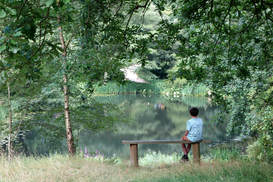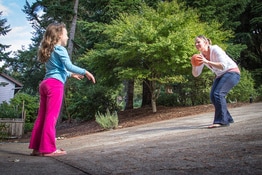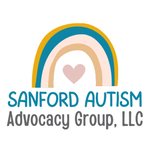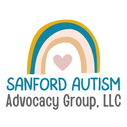|
10/5/2017 0 Comments Elopement and AutismWondering what “elopement” and Autism have in common? Do individuals with Autism often secretly run away to get married? Alas, that is not the case.
The original definition of elope is to run away and not return to the place of origin. However, as defined by the National Institute of Elopement Prevention and Resolution (NIEPR), elopement refers to an individual with cognitive challenges or special needs who wanders, runs away from or otherwise leaves a caregiving facility or environment. Most parents of Autism are all too familiar with elopement. In my observation, no matter where on the spectrum, children with Autism tend to stray from their caregivers; some only occasionally and others quite often. Case in point: our daughter “Amazing Grace”. She was diagnosed with High Functioning Autism at age 3 ½. However, we noticed this behavior in her early on, around age two. Whenever we went to the grocery store, she would somehow find her way to the produce section and to the broccoli. She would talk about the broccoli and touch it, becoming as excited as most children are about ice cream. At age 6 ½ and despite strategies and reminders, Grace continues to stray from the safety of her family from time to time. She usually wanders to get to a preferred item or activity when she has been told to wait, such as waiting to go to the produce section to see this week’s selection of broccoli. A study in 2012 (conducted by Autism Speaks and the Interactive Autism Network) found that nearly half of children with Autism Spectrum Disorder (ASD) at some point attempt to wander or bolt from a safe place. Using parent surveys, the researchers studied over 1,100 children with ASD ages 4-11 years. They found that these children demonstrated much higher instances of wandering than their neuro-typical siblings. Why Elopement? So, what makes children with Autism wander from safety? Given the study in 2012, parenting style was not the culprit. Instead, the more a child was impacted by Autism the more instances of wandering were reported by the parent. From the parents surveyed, most remarked that their child wanders because they just like exploring and running. Others mentioned heading to a favorite place or escaping too much sensory stimulation as reasons. Help for Families As imagined, elopement causes stress and concern for parents and caregivers of those with Autism. One consideration in reducing elopement is to look at the function of the behavior. For example, if the child is wandering to escape an overly stimulating situation, they may benefit from training in self-advocacy. The child could be encouraged to use a specific gesture, word, picture card, etc. to request a break when experiencing sensory overload. Other options to assist with elopement include:
Increased community awareness and education can help tremendously in the case of elopement and individuals with Autism. Let’s do what we can to keep our kids safe! References: www.elopement.org https://www.autismspeaks.org/science/science-news/study-confirms-autism-wandering-common-scary http://www.autism-community.com/why-is-my-child-eloping-and-what-can-i-do/ http://awaare.nationalautismassociation.org/
0 Comments
8/15/2017 1 Comment Diagnosing Autism in AdultsCould an adult actually be diagnosed with Autism? With the increase in awareness, most individuals now are diagnosed with Autism Spectrum Disorder (ASD) at younger ages. However, that was not always the case. As a result, more and more adults are self-identifying behaviors and seeking information regarding an Autism diagnosis.
Behaviors typically related to Autism include: sensitivity to sensory input (touch, taste, smells), difficulty taking others’ perspective, having restricted interests, difficulty with changes to routine and challenges with conversational turn taking. Since some behaviors appear to overlap with other disorders, such as Obsessive Compulsive Disorder (OCD), some adults may have gone misdiagnosed or undiagnosed with Autism for decades. Another factor in late diagnosis is that girls are significantly less likely to be identified with ASD as compared to boys, instead being seen as “shy” or “introverted”. There are also many strengths related to Autism, including: honesty, attention to detail, high skill level in specific areas and less impacted by peer pressure. These strengths, along with great long-term memory and visual thinking skills, make adults with Autism excellent candidates for jobs in computer programming, photography, drafting, animal care, etc. Since there are no medical tests to diagnose Autism Spectrum Disorder, evaluations are typically conducted by psychologists or psychiatrists and consist of gathering systematic observations of the individual in a variety of settings. Input is also obtained from significant others, caregivers, friends, parents, etc. via questionnaires or checklists. However, the challenge is that most behavioral checklists used in assessment were designed for assessing children, not adults. Also, the parents of adults are often deceased or unable to provide quality information about early childhood behaviors– which is key to a comprehensive evaluation. Fortunately, evaluation tools are slowly being created to address the need for assessing Autism in adults. For example, in 2015 the Adult Repetitive Behavior Questionnaire (RBQ-2A) was developed to measure the extent to which adults are affected by repetitive and restricted behaviors (a core symptom of Autism). Also, some experienced child psychiatrists, pediatric neurologists, etc. may be open to working with adults suspecting Autism or can at least be a good resource for information. To learn more about Autism in adults, download the free tool kit provided by the Autism Speaks organization: https://www.autismspeaks.org/adult-tool-kit. Or, feel free to contact us for your free 30-minute consultation. References: Dr. David Beversdorf, www.autismspeaks.org, July 2014. Dr. Temple Grandin, www.iidc.indiana.edu, November 1999. K. Yandell, www.spectrumnews.org, September 2015. 6/15/2017 0 Comments Theory of Mind (TOM) and Autism This month’s topic is perspective taking, more formally described as Theory of Mind (TOM). TOM is a core area of struggle for children and adults diagnosed with Autism Spectrum Disorder. However, research shows that those with Asperger's syndrome may be impacted with less intensity. What is Theory of Mind (TOM)? A definition of Theory of Mind is, “the ability to intuitively track what others know, think, and feel during personal interactions”. We use the information that we gather during these interactions to understand/monitor our own responses, make sense of other people’s behavior, and predict what people may do or say next. The foundations of Theory of Mind skills develop gradually from infancy and typically solidify by 6-7 years of age. Challenges with TOM Theory of Mind deficits may cause social difficulties: being sensitive to other people’s feelings, reading the listener’s interest level in our conversation, anticipating what others think of one’s own social behaviors, and understanding “unwritten” social rules. These deficits may also cause academic challenges related to comprehension of literature, understanding socially based themes in text, or interpreting directions given by the teacher. How Parents Can Help 1. Stress “thinking about others” at home. Discuss how our actions yield positive and/or negative consequences. 2. As situations occur, share your "thinking" with your child (ex: When you cleaned your space at the dinner table tonight, I felt proud of you!) 3. Help your child to deconstruct social rules by using books and social stories (ex: Social Rules for Kids by Susan Diamond and Social Stories by Carol Gray). REFERENCES Jill Kuzma SLP Social & Emotional Skill Sharing Site (2008), www.jillkuzma.wordpress.com; The Applied Psychologist-Second Edition (1999), Chapter 11, Dr. Simon Baron-Cohen, Open University Press, Buckingham/Philadelphia; Understanding Core Social Thinking Challenges: The ILAUGH Model, Michelle G. Winner, www.socialthinking.com. 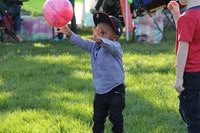 ASD Definition, Characteristics, and other factors Autism Spectrum Disorder (ASD) is a complex developmental disorder that affects each person in different ways. Autism Spectrum Disorder Characteristics The characteristics of ASD fall into three categories:
Diagnosing Autism Spectrum Disorder
Considerations and Recommendations
Adapted from the American Psychiatric Association (2016) and the National Institute of Child Health and Human Development. |
AuthorCrystal Sanford, M.Ed., M.A. CCC-SLP, ASDCS is an Educational Consultant, IEP & Autism Advocate and Speech-Language Pathologist. She is also the host of inspiring podcasts, Thriving Special Families and Thriving Autism Families! Her passion is advocating STRONG alongside fellow Autism and other fellow parents of neurodiverse children, helping them to persistently pursue what their children deserve at school. In her free time, she enjoys gardening and spending time with her husband and two children in San Diego, CA. Archives
November 2023
CategoriesAll Amazing Grace Autism Info IEP Advocacy SAC Company Info Thriving Special Families Tips And Strategies |
Photos from Ivan Radic (CC BY 2.0), Ben Taylor55, Oregon State University, C. VanHook (vanhookc), Rod Waddington, bobobahmat, Ivan Radic, marcoverch, Szhlopp, quinn.anya, bennylin0724, Gamma Man, Lorie Shaull, vhines200, davidstewartgets, truewonder, wuestenigel, ecosistema urbano, Phil Scoville, Our Dream Photography (Personal), Alexander king79, Dick Thomas Johnson
